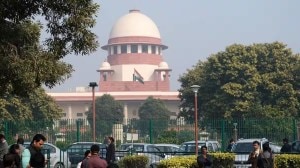- India
- International
Panel works on how to split assets between J&K and Ladakh UTs
The committee, sources said, created an index which measured the backwardness, area, remoteness along with the historical deprivation suffered by Ladakh.
 As part of a restitution process towards Ladakh, the committee proposed a formula of 80:20 for dividing the divisible resources — essentially liquid assets — for J&K and Ladakh.
As part of a restitution process towards Ladakh, the committee proposed a formula of 80:20 for dividing the divisible resources — essentially liquid assets — for J&K and Ladakh.
Although the committee for division of assets between the newly formed Union Territories of J&K and Ladakh submitted its preliminary assessment two months ago, many contentious issues remain. These pertain to division of immovable assets owned by the erstwhile state in Delhi, Amritsar, Chandigarh and Mumbai, besides allocation of government officials of various state departments to the two UTs.
The three-member committee for division of assets between the two UTs, headed by former Defence Secretary Sanjay Mitra, submitted an interim assessment report in October where it recommended certain guidelines for division of assets. The final report of the Committee is expected by the end of the current financial year.
The committee, sources said, created an index which measured the backwardness, area, remoteness along with the historical deprivation suffered by Ladakh.
READ | J&K: Communication blockade affects counter-terror ops
As part of a restitution process towards Ladakh, the committee proposed a formula of 80:20 for dividing the divisible resources — essentially liquid assets — for J&K and Ladakh. But J&K government officials contend that the ratio of population between the two UTs is 97:3, which makes the proposed formula unfair on J&K.
They also argue that even a few years ago, a report by the state finance commission, had recommended only 13.5% of resource allocation to Ladakh division from the erstwhile J&K state. But that report was never accepted by the state government, which has historically allocated around 2% of plan and non-plan expenditure to Ladakh.

Moreover, giving an indication of the Centre’s approach, it apportioned the 14th Finance Commission award between the two UTs in the ratio of 70:30 for the remaining five months of the 2019-20 fiscal, when the two UTs came into being on October 31.
READ | After 4 months, PDP, NC hold meetings in Srinagar
While immovable assets located in the respective UTs are likely to remain in that UT, the big question is about the share of prime real estate properties outside the erstwhile state which will be given to Ladakh. There are six major properties in Delhi, Amritsar, Chandigarh and Mumbai, which include the Kashmir House on Delhi’s Rajaji Marg and J&K House in Chanakyapuri.
Kashmir House is currently used by the Army and is unlikely to be vacated to be given to the two UTs. The division between the other properties also seems to be a tricky proposition as it would pose major challenges of management and control. A bungalow allocated to the erstwhile state government on Akbar Road is also something which cannot be realistically divided between the two UTs.
Considering the issues of pending utilities bill and their share to Ladakh, there is a thought that a new UT like Ladakh should not be burdened with those liabilities. It is possible that some real estate property may be allocated by the Centre ab initio to Ladakh in Delhi to obviate this problem.
READ | Home Ministry orders withdrawal of 7,000 paramilitary troops from Jammu and Kashmir
The other issue is of allocation of government officials of various departments to the two UTs. As per provisions of the Reorganisation of J&K Act, an option has been given to various officials to choose between the two UTs. There is a fear that this will lead to most people opting for J&K which will leave Ladakh with huge vacancies.
As a UT without legislature, the recruitment to fill these vacancies will have to be done by UPSC which will put local Ladakhis at a huge disadvantage. There is no clarity on grant of tribal status to residents of Ladakh or restrictions on landowning by non-residents in the region. Many fear that the allocation of assets to Ladakh, without adequate clarity on these critical matters, could cause further problems for an under-developed border area.
Apr 16: Latest News
- 01
- 02
- 03
- 04
- 05






































